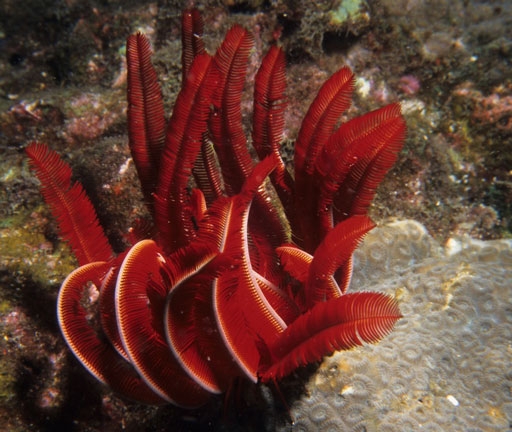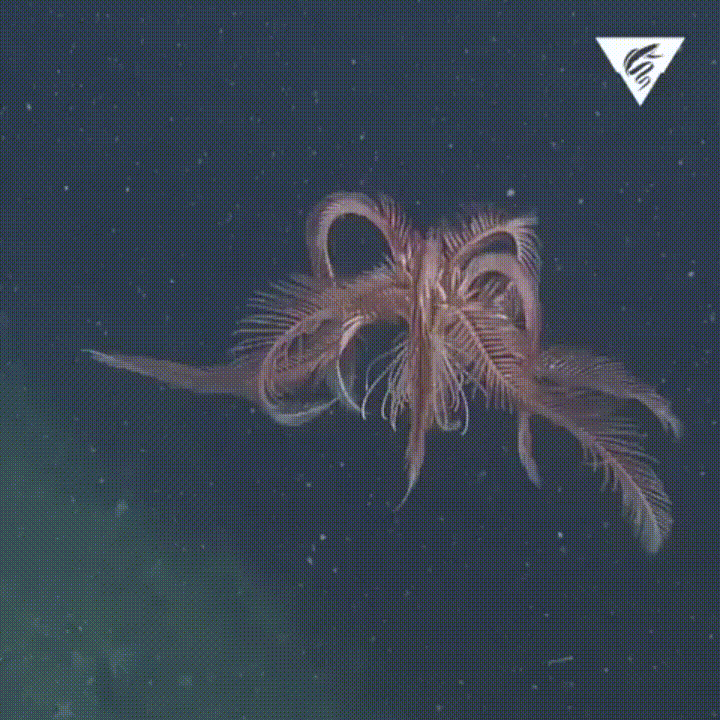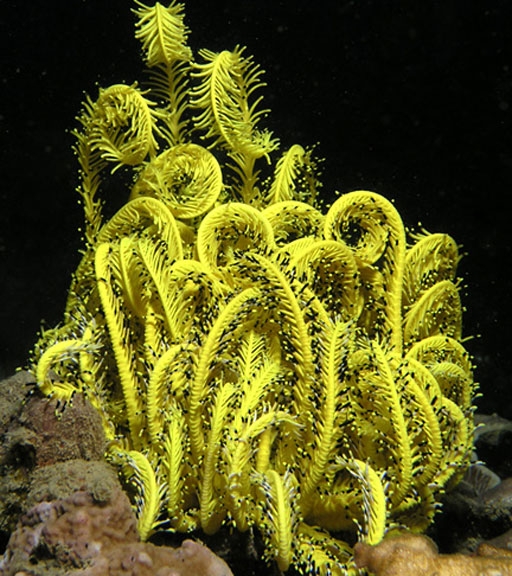What looks like a colorful feather duster, moves like a giant spider and lives in the ocean? That would be a feather star, a beautiful otherworldly sea creature that dates back to more than 400 million years ago.

They are part of the crinoid family which contains both sea lilies (which have a stalk that attaches to the sea floor) and feather stars (which lose their stalks shortly after maturing).
They are related to other echinoderms, like sea urchins and starfish, and have the same basic five-sided symmetry.

Image: Derek Keats via Flickr (CC BY 2.0)
Unlike their cousins, crinoids can have between 10 and 200 arms, each with lots of tiny little tube feet that give them their feather-like appearance.

Image: Hectonichus via Wikimedia Commons (CC BY-SA 3.0)
They use their fringed arms to gracefully propel themselves upward through the water and “swim” for short distances when disturbed.

Feather stars feed by attaching themselves to coral, sponges or rocks with their legs (called cirri) and using their mucus-covered arms to trap and filter tiny food particles from the water. The tiny tube feet then direct the food into their mouths.
Oh, and crinoids have a U-shaped gut, which means their mouth and anus are located next to each other.
To reproduce, feather stars will release sperm and eggs into the water. Once the eggs hatch, they form larvae which eventually float down to the sea floor to grow into fully-formed stars.

Image via NOAA Okeanos Explorer Program
While they can be found in both shallow waters and deep waters, feather stars typically live near tropical reefs.

Image: Nhobgood via Wikimedia Commons (CC BY-SA 3.0)
Sea urchins are believed to prey on feather stars, but most other creatures tend to leave them alone. Apparently, these exotic beings might just too beautiful to eat.




